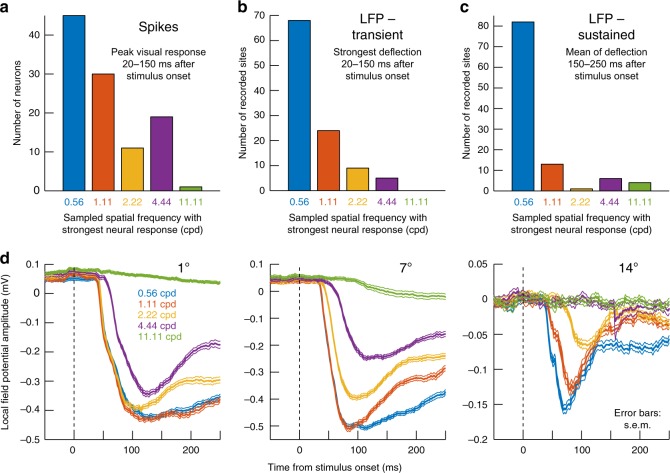Fig. 7.
Low-pass primate SC spatial frequency filtering characteristics. a Distribution of preferred spatial frequencies in our population. In this analysis, we binned neurons according to the presented spatial frequency (out of five values) eliciting maximal response. More neurons were driven the strongest by the lowest spatial frequency (0.56 cpd). b We performed a similar analysis but on the transient evoked local field potential (LFP) response (Methods; also see d for example evoked LFP responses, which are negative going). The number of electrode penetrations showing maximal response for 0.56 cpd was even higher than for the isolated neurons in a. c This effect was even stronger in the sustained LFP response starting after 150 ms from stimulus onset. Thus, at the population level reflected by LFP signals, the primate SC is primarily tuned to low spatial frequencies. d Stimulus-evoked LFP responses from the same electrode penetrations in which the example neurons of Fig. 6a were isolated and recorded. In the LFP, all three electrode tracks, regardless of eccentricity, showed a preference for low spatial frequencies (stronger negative deflections), even in the near-foveal SC region where the neuron preferring 3.5 cpd in Fig. 6a was isolated. This means that the SC over-represents low spatial frequencies in neural sensitivity. Error bars denote s.e.m.

